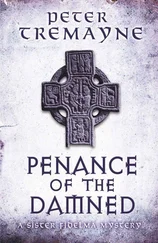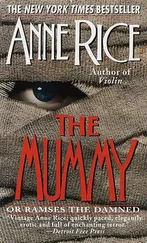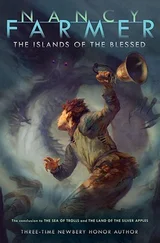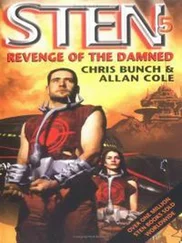“Hey, we’re not taking any fire!” somebody noticed.
“Yeah. You’re right. Where are the Japs?”
Somebody yelled from the boat on our right, “We’re going in unopposed.” We passed the word to the boat on our left, and the news traveled all along the line, boat to boat. “Unopposed landing!”
“I don’t believe this!” somebody else yelled.
No bodies floated in the water. No snipers’ bullets whined over our heads. Just the steady beat of the amtrac’s diesel and the churn of water against the hull.
They hadn’t held our company in reserve because the whole landing was running so smoothly. They didn’t figure they’d need us later on.
In our relief, somebody started singing “Little Brown Jug.” We all joined in.
Ha, ha, ha, you and me,
Little brown jug, don’t I love thee!
It had been one of Hillbilly’s favorites.
Still, I was thinking, This can’t go on. Something’s got to go wrong here.
Nothing did. We motored on in. As we got close to the shore, we looked for the seawall that we’d spent all that time preparing to climb. There was a broken line of stones with gaps, like somebody’s bad teeth, but no wall. If there had been one to begin with, the Navy’s guns had punched it out. Farther in we could see the blackened hulk of a big artillery piece that had once pointed seaward. Our amtrac crawled out of the surf and through a gap between the stones. Then it stopped. The back gate slammed down and we piled out, ducking low out of habit. No shots came our way. It was more like one of our maneuvers than any battle we’d been through. We formed a line and began advancing across the beach. We heard occasional fire far to the left or right. But we were on our feet, moving calmly. There were plenty of shell holes to dive into if we had needed them. But we didn’t. We’d walked ashore like we were strolling down the driveway to pick up the mail.
There was some action elsewhere along the lines. In the afternoon a sniper shot Colonel John Gustafson in the arm just as he stepped off an amtrac. He turned around and calmly walked back aboard and was taken out to the ship for treatment.
* * *
Marines still argue: Which was worse, Peleliu or Okinawa? I vote Peleliu, but others who went through both will tell you that Okinawa was worse, an opinion they base on the amount of artillery the Japs threw at us. After the first two or three days on Peleliu, we didn’t get much of that—we’d knocked out most of their heavy guns. But on Okinawa, once it started, it just kept coming at us right up to the last days.
The Japs had learned from Peleliu. When we finally cornered them on Okinawa, once again they were holed up in caves and tunnels. We had to pry them out one by one, as we had on Peleliu. Lieutenant General Buckner called it a “blowtorch and corkscrew campaign.” They were fighting on home ground. Okinawa is in the center of the seven-hundred-mile chain of islands stretching from Formosa to Kyushu, the Ryukyus. The Japs considered the whole chain part of their home islands, just like we might think of the Florida Keys. On Okinawa we faced everything we had faced on other islands all over again. Rain, mud, malaria, flies, bodies crawling with maggots. And we were tired. Before it was over, the fight for Okinawa would seem to stretch out to forever, with no end in sight.
But the first days gave us no hint of what was to come.
The area behind the beach was jammed with amtracs and DUKWs bringing in supplies, and we moved off quickly. The island was about six miles wide where we came in, and the plan was for us to cut it in half. The First and Sixth Marine divisions were to capture Yontan, the larger of two airfields. Then the Sixth Marines would turn north and sweep up the island to the tip. We would head directly across to the eastern shore. The Army meanwhile would capture the smaller Kadena airfield and turn south. All this was supposed to take a couple weeks. But by the time we were off the beach, troops had already moved up to the edge of both airfields.
The mouth of the Bishi Gawa River, where our mortar platoon landed, was choked with the wreckage of small boats. Some of them were the plywood suicide motorboats that had been caught by our planes before they could get out to our fleet. We advanced in a column past fields that had recently been harvested and were ready for the plow. The Okinawans grow rice and beans, yams and patches of sugarcane. It appeared they just let their livestock run free, because we kept encountering goats, pigs and chickens. We had some fine barbecues in prospect. The small farmhouses had thatched roofs, and looked tidy and well kept behind low stone walls. Yards were shaded by pine trees. But the buildings themselves were deserted. We found out later the Japs had been telling the natives tales of what terrible things the Americans, especially the Marines, would do to them.
As we walked by, I checked out their horses. They were smaller and shaggier than the ones I was used to back home, more like a Shetland than a true horse. They turned out to be gentle little horses, good work animals. And while I don’t remember anybody trying to ride one, our mortar squad adopted one and soon had him carrying our ammo.
By afternoon we got to higher ground and began to catch occasional fire. Usually it was just a couple Japs on a Nambu light machine gun or a mortar, or a sniper. We’d knock them off as we came on them, and then run into another one a little farther along. But it seemed half-hearted, nothing like we’d faced in the jungles of New Britain. About four o’clock we halted to dig in for the night. The ground was soft, perfect for foxholes and setting up the mortars. I sent a couple of the men to check out a nearby farmhouse and they came back to report it clear.
Tex Cummings and I had just started to dig a foxhole when we heard the distant buzz of airplanes. We looked up and spotted two of them, just specks, but low and coming from the bay.
As we watched, the specks grew larger. They were going to fly close by.
“Well, here come two of ours,” Tex said. “They’re looking out for us.”
I spotted the red circles on the sides of the planes. Meatballs we called them. You learned to recognize them instantly, a warning like the red hourglass on a spider.
“Better take another damn look, son,” I said. “Those are Jap planes. They’re probably spotting us.”
They passed thirty or forty yards off, almost at eye level, and as they passed the pilots turned and looked right at us. It was one of those moments when time seems to stop, and I could clearly see every detail—their jackets, leather helmets, goggles up on their foreheads, white scarves. Then they roared on without swerving or changing course.
We stood waiting until they were gone. “Probably looking for bigger stuff,” I said.
Neither of us had bothered to reach for our M1. We’d have to have been very, very lucky to hit one.
From where we dug in, we had a distant view of the invasion ships riding at anchor out in the bay. A little after our encounter with the two Zeros, another Jap plane passed high overhead, flying west toward the beach. Antiaircraft guns started banging away. We watched him calmly circle, like a hawk or a buzzard. As I stood there, I heard myself saying, “Somebody hit that son of a bitch! Somebody hit that son of a bitch.”
Then he pointed his nose down and went into a steep dive, smacking one of our transports midship. Flame and smoke boiled up and the ship burned late into the evening. It was the first successful kamikaze attack I’d witnessed.
After sunset, the temperature slipped into the sixties and we pulled on our wool-lined jackets. We broke out the little bottles of brandy that were supposed to keep us warm. A breeze had carried off the haze and one by one the early stars came out. We settled in, sharing foxholes, one sleeping while the other stood watch.
Читать дальше











